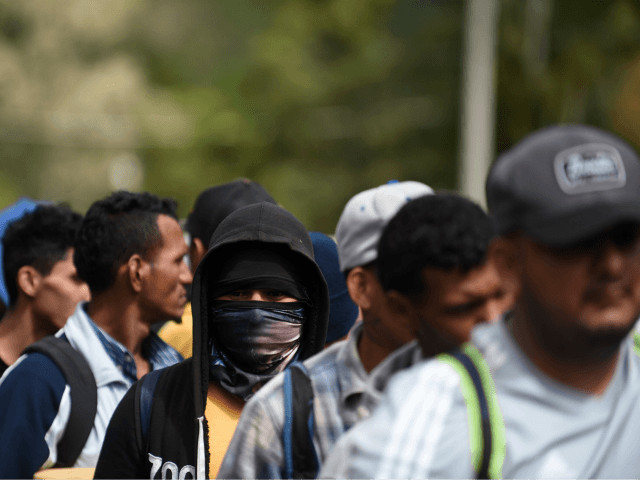The New York Times‘ editors have posted an op-ed urging open borders.
“My family came to the United States from our native South Africa in the late 1980s,” wrote Farhad Manjoo, a regular columnist at the newspaper:
But why had I deserved that chance, while so many others back home — because their parents lacked certain skills, money or luck — were denied it?
When you see the immigration system up close, you’re confronted with its bottomless unfairness. The system assumes that people born outside our borders are less deserving of basic rights than those inside. My native-born American friends did not seem to me to warrant any more dignity than my South African ones; according to this nation’s founding documents, we were all created equal. Yet by mere accident of geography, some were given freedom, and others were denied it.
According to the standard economic rules of supply and demand, Manjoo’s policy of globalized fairness would expand the U.S. economy, grow the stock market and drive up the total wealth in the United States.
It would do so by exploding the population of the United States from the current level of 330 million.
This dramatic population expansion would also create vast new social and economic gaps between rich and poor, spike the cost of real estate and homeownership, import myriad foreign hatreds and backward ideas into the United States, reduce public solidarity against elite rule, and allow a massive expansion of government into the economy, private lives and civic communities.
Like their cross-town rivals at the Wall Street Journal, the editors at the New York Times are inviting their columnists to push for more immigration. The day before Manjoo’s column, for example, the New York Times editors posted an op-ed by an Indian immigrant urging the United States to double the annual inflow from 1 million to 2 million immigrants.
That is a huge number, partly because only about four million Americans are born each year.
Manjoo, ensconced in the New York Times, shows no concern for the Americans who invited him and his family into their American homeland.
In fact, he tries to combine his fairness argument for open borders with an appeal to the vanity of the New York Times‘ elite readers. He says immigrants are needed to help the U.S. elites keep pace with their rivals in China and India because Americans are just too few, too old, too infertile, and too unproductive:
Economically and strategically, open borders isn’t just a good plan — it’s the only chance we’ve got. America is an aging nation with a stagnant population. We have ample land to house lots more people, but we are increasingly short of workers. And on the global stage, we face two colossi — India and China — which, with their billions, are projected to outstrip American economic hegemony within two decades.
That focus on maximizing federal power is a commonplace among advocates for greater immigration. But most Americans are instead focused on their wages, jobs and families, their home, neighborhoods, and pastimes — not on the great game between rival elites in rival governments.
Manjoo ends his article by saying “a new migrant caravan is forming in Honduras … ‘Let them in.’”
But both Sen. Chuck Schumer and House Speaker Nancy Pelosi have beaten Manjoo to the extreme open-borders punch.
On January 8, Pelosi responded to President Donald Trump’s national address on the border emergency by saying the Central American migrants “are a humanitarian challenge, a challenge that President Trump’s own cruel and counter-productive policies have only deepened.”
“We can welcome legal immigrants, refugees, without compromising safety and security,” Schumer declared, adding, “a symbol of America should be the Statue of Liberty, not a 30-foot wall.”
Nationwide, the U.S. establishment’s economic policy of using legal migration to boost economic growth shifts wealth from young people towards older people by flooding the market with cheap white-collar and blue-collar foreign labor. That flood of outside labor spikes profits and Wall Street values by cutting salaries for manual and skilled labor of blue-collar and white-collar employees.
The cheap labor policy widens wealth gaps, reduces high tech investment, increases state and local tax burdens, hurts kids’ schools and college education, pushes Americans away from high tech careers, and sidelines at least five million marginalized Americans and their families, including many who are now struggling with fentanyl addictions.
Immigration also steers investment and wealth away from towns in Heartland states because coastal investors can more easily hire and supervise the large immigrant populations who prefer to live in coastal cities. In turn, that investment flow drives up coastal real estate prices, pricing poor U.S. Latinos and blacks out of prosperous cities, such as Berkeley and Oakland.
